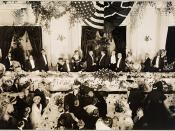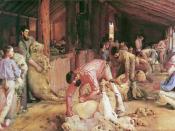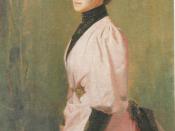Through studying artists from different periods in Australian history, we are able to trace the development of and changes in the Australian identity. From the stylised works of John Glover, the vibrant impressions of Tom Roberts, to the contemporary analysis of Anne Zahalka, the concept of Australian identity has gone through much remodelling over the ages. Each artist response is different, relative to the individual culture and social issues of the period. However, they are all common in that they represent the sentiments of the Australian public at the time, and what they feel it means to be Australian.
Born in England in 1767, John Glover first established fame as a painter of romantic landscapes. At the age of 64 he was awarded a land grant in Tasmania, which he named Patterdale. Following his migration to Australia, his artistic style changed significantly as he responded to the new light and landscape presented by the Australian bush.
He became one of the first colonial artists to break away from the comfortable European traditions, and respond truthfully to the unique landscape with which he was faced.
Glover's work is highly culturally significant, as he depicted the views of early colonial Australians, in a time when Australian identity was at its absolute infancy. These views are clearly shown in Natives on the Ouse River, Van Diemens Land (1838). In this artwork we can Aboriginal people swimming and playing in the river, or gathered around a campfire on the rivers bank. This painting harks back to Glover's romantic origins, with towering, ancient eucalypts, and the ideal of 'the noble savage' epitomised in the joyous occupation of the native peoples.
This scene is one that could never have been witnessed by Glover. Just prior to his migration to Australia, the Aborigines were forcibly...


